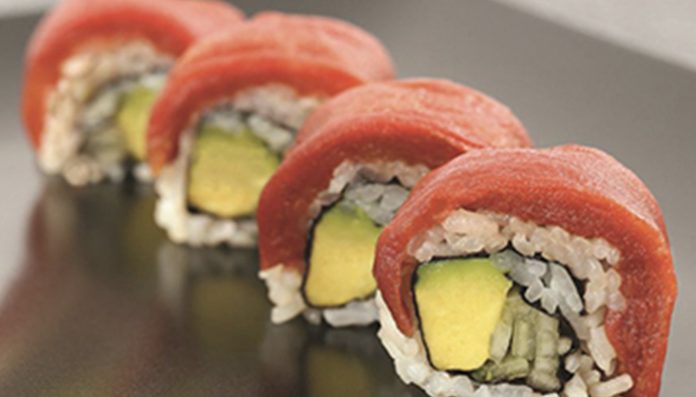The research, which was commissioned in 2019 from wellness-focused data technology company SPINS, shows that the plant-based food category erupted by 31 percent over the past two years into a USD 4.5 billion (EUR 4.01 billion) industry at the national retail level, with 11 percent of that growth occurring just last year alone. Meanwhile, the total U.S. retail food market grew by 2 percent in dollar sales during that same period – indicating to PBFA and GFI “that plant-based foods are a key driver of growth for retailers nationwide.”
“Plant-based foods are a growth engine, significantly outpacing overall grocery sales,” said PBFA Senior Director of Retail Partnerships Julie Emmett, in a press release announcing the SPINS findings. “We are now at the tipping-point with the rapid expansion of plant-based foods across the entire store, so it is critical for retailers to continue to respond to this demand by offering more variety and maximizing shelf space to further grow total store sales.”
While plant-based milk products dominate the sector, plant-based meat and protein alternatives, including seafood-inspired options, are contributing to the category’s growth consistently and in innovative ways. The plant-based meat and seafood category, on its own, is worth more than USD 800 million (EUR 715 million), SPINS researchers found, with sales up by 10 percent in the last year. Currently, plant-based meats account for 2 percent of retail packaged meat sales, with refrigerated plant-based meat “driving category growth with sales up an impressive 37 percent,” according to the SPINS figures. (Note: Plant-based seafood alternatives were counted with plant-based meat alternatives for the sake of the study).
Who is to thank for this significant expansion? Health-conscious consumers, especially those counted among the younger generations, said Michele Simon, PBFA’s executive director. “Health was pointed to as the number-one driver for why consumers are interested in shifting away, particularly from meat and protein animal products, towards plant-based options in general,” Simon said.
“The fact that it tastes good” is also a primary motivating factor for consumers as far as plant-based products are concerned, Simon added.
“Taste is always high up there as a default,” she said. Jen Lamy, GFI’s sustainable seafood initiative manager, agreed.
“Regardless of what people tell pollsters, studies of what people actually choose to eat (“revealed preference”) consistently show that taste, price, and convenience determine what most people eat,” Lamy said. “Successful plant-based products are appealing to consumers on those attributes more than ever. These products are also appealing to meat-eaters looking to reduce their meat consumption. In fact, Beyond Meat found that 93 percent of the consumers buying the Beyond Burger also had conventional meat in their carts.”
Animal welfare also tends to play a role in guiding many consumers toward the plant-based alternative food market, Simon said. However, particularly when it comes to younger generations, including millennials and Generation Z, a spotlight is being shone on environmentalism as well, as these consumers are “particularly interested in where their food comes from,” Simon said.
“When you dial into the younger generation, it’s really much more about their concerns for the environment,” she said.
Appealing to younger demographics is of the utmost importance to plant-based food producers of all types, according to PBFA and Simon. PBFA itself – whose membership network includes plant-based seafood alternative providers such as Good Catch, Ocean Hugger Foods, and Fry Family Foods – has been attempting to do just that with its Power Plant campaign, a first-of-its-kind grab-n-go concept offering “a turn-key solution to meet the high demand for plant-based foods on college campuses, in retail and foodservice retail spaces, airports, hospitals, and other destinations across the United States,” the plant-based foods promotional organization wrote on its website.
Small segment, big opportunity
Although the plant-based seafood alternatives segment is small, both Simon and Lamy said it’s being viewed as an area of tremendous opportunity.
“Plant-based seafood is a small, but growing segment of the overall market,” Lamy said. “While plant-based beef and chicken products are relatively common, categories like fish and shellfish are underrepresented in the plant-based market. While retailers carry an average of 41 plant-based milk products, they carry an average of 24 plant-based meat and seafood products. Plant-based fish and shellfish present a massive market opportunity, especially with growing unmet demand for seafood globally.”
About USD 9.4 million (EUR 8.4 million), or 1.2 percent, of total plant-based meat dollar sales come from plant-based seafood alternatives, according to Lamy, and around 95 percent of plant-based seafood alternative sales are achieved via frozen products.
“While still relatively small compared to other plant-based proteins, the sector is growing, with new companies expanding into the shelf-stable (such as Good Catch plant-based shelf-stable tuna) and fresh (such as Ocean Hugger plant-based raw sushi products) seafood markets,” she said.
If the news cycle over the past few years is any indication, more plant-based seafood alternative developers are cropping up to help put the segment on the map. The aforementioned Good Catch burst onto the scene in 2018 when it secured USD 8.7 million (EUR 7.5 million) in funding to start distributing its plant-based tuna pouches and other products.
“The relentless and indiscriminate killing of marine life is devastating ocean ecosystems,” said Good Catch cofounders and co-CEOs Chris Kerr and Eric Schnell in a joint statement in April 2018. “The only truly sustainable seafood is seafood that allows fish to remain in the ocean. It is abundantly clear that we need a new approach to seafood.”
The Newtown, Pennsylvania-based company offers imitation seafood products made from beans: about 40 percent pea, with the rest being soy, chickpea, lentil, fava, and navy. The special ingredient that differentiates the products from a run-of-the-mill soy burger is sea algae oil, which contains omega-3 fatty acids. Good Catch’s imitation tuna packets come in three flavors: Mediterranean, Oil & Herbs, and Naked in Water. The firm has also created other bean-based products that act as analogs for crab cakes, fish sliders, and burgers.
New York City, New York-based Ocean Hugger Foods, another seafood analog developer, has also seen its share of investment, having completed its third early-stage venture capital funding round in January 2019, netting USD 2.88 million (EUR 2.57 million). That doesn’t include the additional USD 250,000 (EUR 222,800) the business received in March 2019 from Kale United AB, a Swedish investment firm focused on plant-based businesses. The company’s main product, “Ahimi,” is made from tomato, soy sauce, water, sugar, and sesame oil, and is meant to resemble ahi tuna.
There is also AFT Holdings, a diversified holding company and the owner of All About Healthy Foods Holdings and its subsidiary Atlantic Natural Foods (ANF), which produces vegan seafood alternative products, including the Loma Linda brand of TUNO products. Marketed as a “shelf-stable” vegan tuna line, the brand is sold by retail giant Walmart across the United States as of March 2019. A spokesperson for ANF confirmed to SeafoodSource in March that 1,100 Walmart stores are carrying the line, which includes Sriracha, Lemon Pepper, and Spring Water varieties in easy-to-open five-ounce cans. TUNO also sells three-ounce pouches in three flavors: Sesame Ginger, Thai Sweet Chili, and Lemon Pepper. The cans and pouches retail for a suggested USD 1.49 (EUR 1.32) to USD 1.99 (EUR 1.77) each.
Terms and conditions
Egil Ove Sundheim, the U.S. director of the Norwegian Seafood Council (NSC) – which has been working directly with American consumers in recent years, to understand what drives and deters modern seafood purchasing – declared earlier this year that “origin matters for the end-consumers.” As such, it worried him how incoming plant-based seafood alternative developers could be creating undue confusion with the words they used to market their products.
“We know origin matters – that’s our starting point,” he said. “And that’s why I’m also a little concerned about some vegan/vegetarian products now coming onto market that are labeled as ‘salmon’ or ‘tuna’ or… ‘finless fish.’ I think the industry will have to watch out for what’s going on right now because the definition of salmon, the definition of tuna, is being challenged.” Requirements set forth by the U.S. Food and Drug Administration determine “what a product should be to be called salmon or to be called tuna, and these products do not fulfill those requirements,” Sundheim said. “I think that we [as an industry] have to be aware that this is going on. We have products now using our terminology…that are defined by the FDA not to be what they’re claiming to be. We need, as an industry, to raise our voice.”
“If nobody raises their voice about it, we might end up in a similar situation as milk did a few years back when soy milk and almond milk were introduced, claiming a part of the milk category and even claiming a part of the milk cooler,” he added.
PBFA’s Simon confirmed that issues surrounding the labeling of plant-based seafood alternatives have indeed come up for the organization and its seafood-inspired members.
“One thing that has come up [with plant-based seafood alternatives] is the labeling issue,” Simon said. “We work with our members closely to ensure that they are using proper qualifiers and are being clear. But we are already seeing some pushback from the fish industry, similar to what we’ve seen from the milk and meat industries.”
According to Simon, whether it’s labeling plant-based seafood alternatives or knowing how to promote them competitively, much of the segment remains unchartered territory.
“For meat, the health proposition is clearer – red meat and processed meats, in particular, have been identified as causing diseases and not being good for you in certain quantities. With seafood, the issue is less about health… and more about the environmental impact and overfishing, and so forth,” she said.









